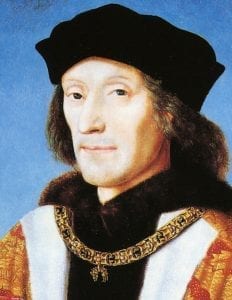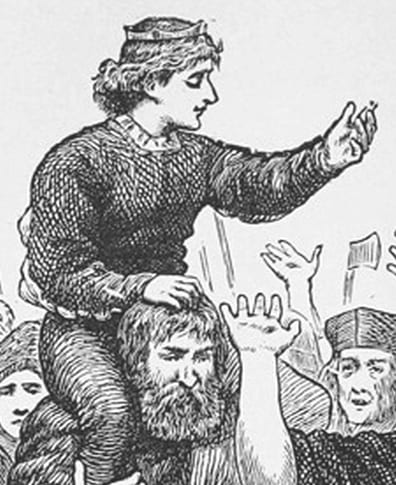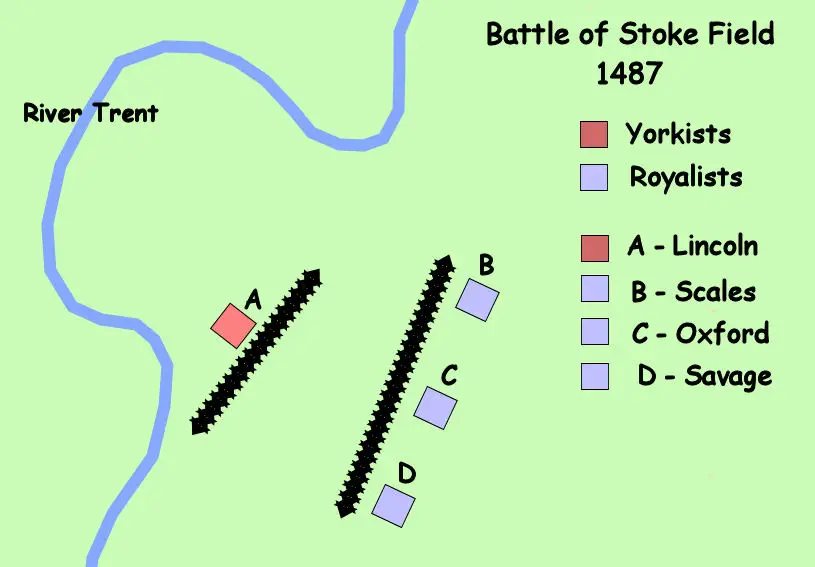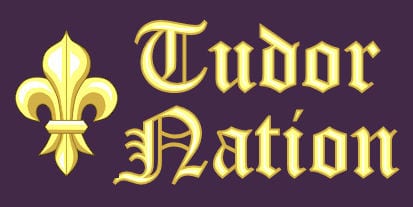Background to the Battle of Stoke Field
Around a hundred years before the Battle of Stoke Field, a struggle for the crown began between two branches of the descendants of King Edward III. The descendants of John of Gaunt, Duke of Lancaster had a red rose as their emblem, while the descendants of Edmund Duke of York chose a white rose. This led to the conflict between the two branches being known as the Wars of the Roses.
The Yorkist King Edward IV died unexpectedly in 1483. Although his eldest son Edward was designated King Edward V, he was later declared illegitimate as it was claimed that King Edward IV had a precontract to marry Eleanor Talbot. Edward’s brother, Richard took the throne as Richard III and the two princes, Edward and Richard disappeared from the Tower of London.
Henry Tudor was the sole remaining Lancastrian candidate and he invaded and defeated Richard III at the Battle of Bosworth Field on 22nd August 1485. He was proclaimed King Henry VII on the battlefield.

Henry VII married Elizabeth of York, daughter of King Edward IV hoping to bring the Wars of the Roses to an end.
Edward Plantagenet, Earl of Warwick. Son of King Edward IV’s younger brother, George, was imprisoned in the Tower of London to prevent any move to place him on the throne by Yorkist supporters.
The Pretender Lambert Simnel
In 1487, supporters of the House of York noted that Lambert Simnel, son of a tradesman who was being educated by Richard Symonds in Oxford, bore a similarity to Edward, Earl of Warwick. At the time it was believed that the young Earl had escaped from captivity so they groomed him to impersonate Edward.
Simnel’s chief supporters were:
John de la Pole, Earl of Lincoln – he was the son of Richard III and Edward IV’s sister, Elizabeth. He was one of the main players in the Lambert Simnel rebellion.
Margaret of Burgundy – the sister of King Edward IV and King Richard III and ruler of Burgundy following her husband’s death in 1477. She fiercely opposed the Tudor dynasty and provided Simnel with political and financial assistance from her base in Burgundy. She also provided an army of German mercenaries.
Gerald FitzGerald – the 8th Earl of Kildare and Lord Deputy of Ireland. He provided support for Simnel’s cause in Ireland and backed his coronation as King Edward VI.

Simnel was crowned in Christ Church Cathedral, Dublin Cathedral on 24th May 1487. Plans were made to invade England, defeat Henry VII and seize the throne. It is likely that Lincoln thought to rule as regent for the young Pretender.
The Days Before the Battle
On 4th June 1487, Lincoln’s army of predominantly Flemish and Irish troops, landed in north Lancashire and began marching south. A number of English Yorkist nobles joined them including Francis Lovell, and Thomas Broughton.
King Henry had been aware of Lincoln’s championship of Simnel for some time and had been readying troops for a possible invasion. These troops now marched to meet the invaders.
By 10th June 1487 Lincoln’s Yorkist force had reached Bramham Moor. A Tudor force of around 400 men, led by Henry Clifford, was camped near Tadcaster. Lord Francis Lovell led a force of 2,000 Yorkists and defeated Clifford.
On 12th June 1487, Lincoln managed to divert a Royal force led by the Earl of Northumberland, by ordering Lord Scrope to attack York and then flee north.
Meanwhile Lincoln took his main force south. They were challenged near Doncaster by a Tudor force led by Edward Woodville (Lord Scales). Although Lincoln eventually forced Woodville to retreat, Tudor reinforcements had arrived.
by 15th June Lincoln’s force had reached East Stoke.
Battle of Stoke Field 16th June 1487

Lincoln positioned his force on Rampire Hill, near East Stoke, protected by the River Trent. He had around 8,000 men including a force of g mercenaries commanded by Martin Schwartz.
The Tudor army, of around 12,000, was comprised of three sections. It was directed by the King from a vantage point with Henry taking no part in the fighting. The Earl of Oxford led the vanguard with around 6,000 men, while the two flanks, commanded by Baron Scales and Sir John Savage were held in reserve.
The Tudor force opened the battle with volleys of arrows fired at the Yorkists. The intensity of the arrows was such that Lincoln decided to leave the high ground and mount a concentrated attack on the vanguard. Although Oxford’s force was badly shaken by the attack, it held firm.
Having lost the advantage of the high ground, the Yorkists were now at close range and more vulnerable to the repeated volleys of arrows fired by the Tudor longbowmen. Those without body armour had no protection and were quickly cut down. French chronicler Jean Molinet commented that many of the Yorkists were ‘filled with arrows like hedgehogs.’
Furthermore, due to the battle position chosen by Lincoln, the Yorkists’ retreat was impossible due to the presence of the River Trent on three sides. They were pursued and cut down at the river bank. Lincoln and Martin Schwartz were killed during the fighting as was Sir Thomas Fitzgerald. Lord Lovell and Thomas Broughton are believed to have survived and may have fled to Scotland.
The Pretender Lambert Simnel was captured but King Henry VII recognised that he had been a pawn in the Yorkist scheme to regain the throne. He was pardoned and given a job in the royal kitchens. He later rose to become royal Falconer.
Published April 24, 2024 @ 3:25 pm – Updated –
Harvard Reference for the Battle of Stoke Field:
Heather Y Wheeler. (2024). Battle of Stoke Field 16th June 1487 Available: https://www.tudornation.com/battle-of-stoke-field-16th-june-1487 Last accessed [date]

